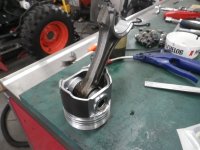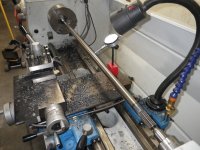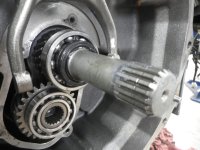The Fred
I'm intrigued by the amount of top piston ring side clearance. It seems a bit unusual even considering the addition of the turbo charger and the 6 to 8 lbs of boost your running.
In doing some research of diesel piston failures, I couldn't find anything where the ring groove increased in width. Typically the failure mode is just the opposite where the groove gets compressed limiting the rings ability for it to move within the groove.
If over fueled it seems this would either cause piston side wall and ring wear due to lack of lubrication (fuel wash) or would generate excess temperatures resulting in piston damage (burning, cracks, etc...). It's hard to tell from the photos, but there doesn't seem to be any evidence of this.
Pistons for the turbo charged
L5740 appear to be 100% solid aluminum without the top steel ring groove. (Qualifier: Online photos are not the best, so I'm not 100% certain the pistons are 100% aluminum (ie: no steel at top ring groove). If this is true, how does this piston prevent expanding ring groove width and provide long term durability?
So how does the groove wear? Is it due to the ring rotating within the groove and ring gap edge scrapping way the groove? Is it from material displacement due to the piston yielding? Is there evidence this is occurring?
Like I said in the beginning, my interest is peaked with this failure mode and just trying to learn.
If pistons cannot be found with the desired top steel ring groove, can you have the new pistons sent out for hard anodizing of the ring groove? I'm using hard anodizing as an example as there are other methods being deployed with ring grooves.
I found this document when researching piston failures and found it very interesting.
https://www.memoparts.com/img/cms/Documents/Piston%20Failue.pdf


